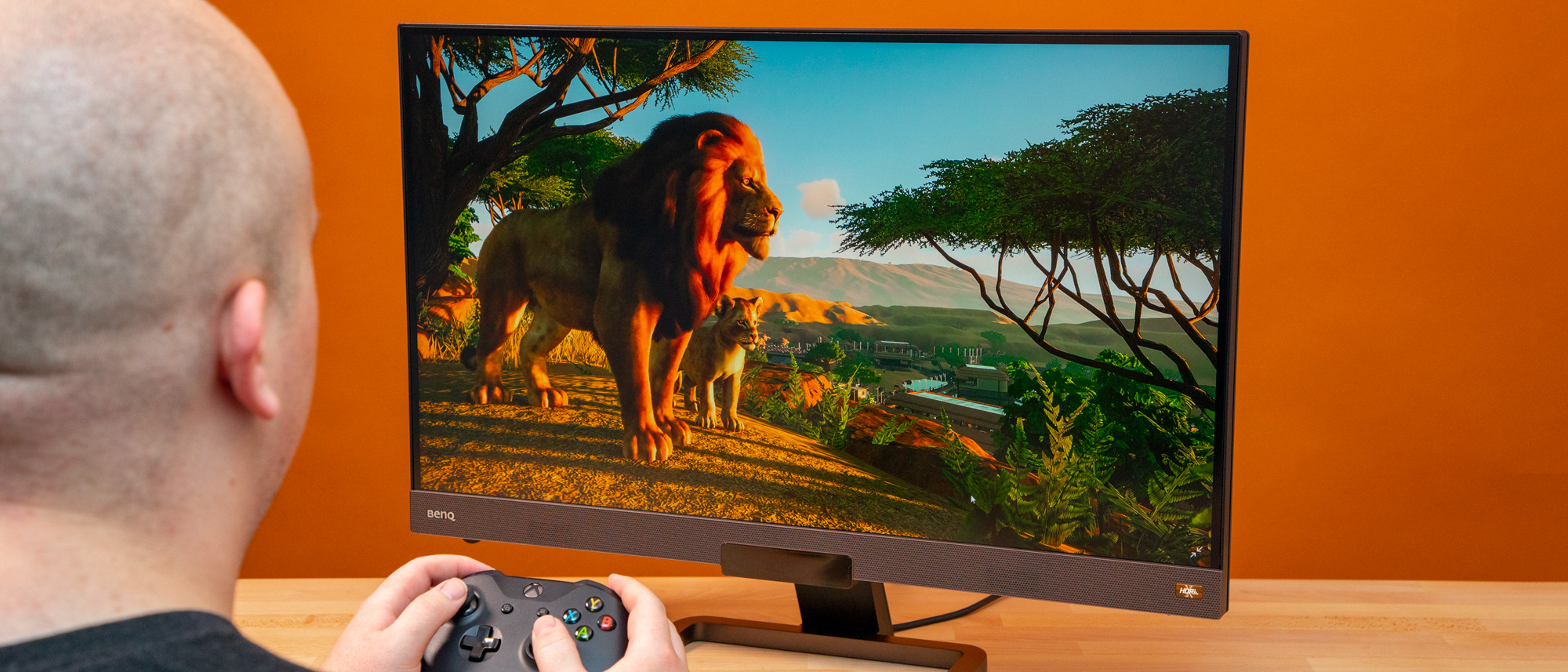TechRadar Verdict
The BenQ EX2780Q is a gaming monitor fused with a professional monitor, so it’s geared up for a lot. Its combination of a color-accurate, fast-refresh IPS panel and a strong speaker offer a strong entertainment experience, but some obnoxious HDR behavior is disappointing at this price point.
Pros
- +
10-bit color depth
- +
Worthy speakers
- +
Jack of all trades
Cons
- -
Wonky HDR on PC
- -
Basic stand
Why you can trust TechRadar
Two minute review
The BenQ EX2780Q is a $599 (£449, about AU$860), 27-inch gaming monitor that starts with the fundamentals, like a 1440p IPS panel refreshing at 144Hz and offering a 5ms GTG response time, but it expands on that in a number of ways. The first way it goes above and beyond your typical gaming monitor is with its 2.1-channel speaker design.
For most gaming monitors, we’re lucky to even get speakers built in. Even when they’re present, they can feel like an afterthought. That’s not the case with the BenQ EX2780Q monitor. The pairing of two 2W speakers with a 5W subwoofer is surprisingly effective.
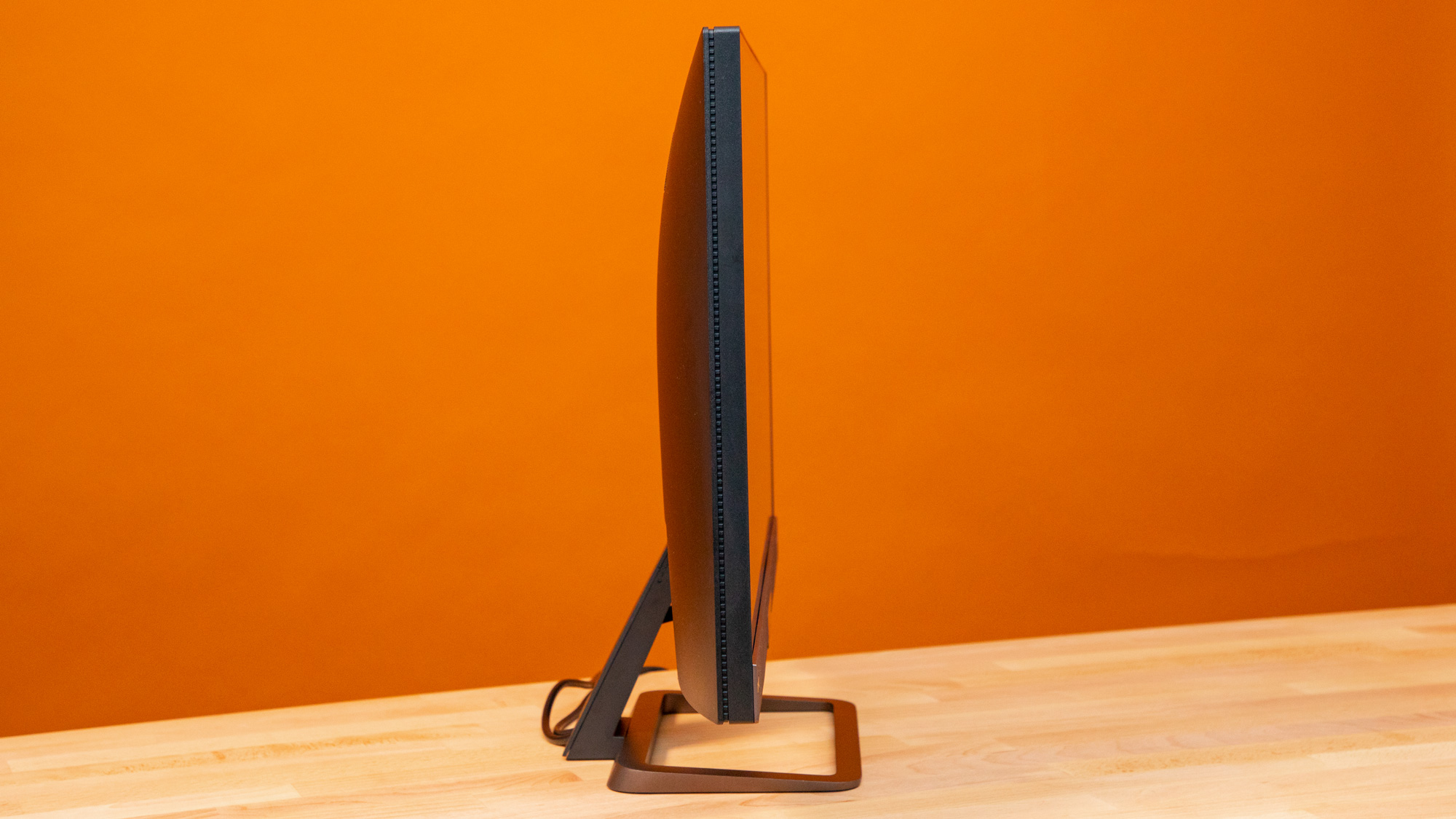
While watching The Witcher on Netflix or playing Star Wars Jedi: Fallen Order, the speakers were easily able to fill a 150 sq. ft room with clear and crisp sound. They don’t boom like a proper set of speakers can, but it’s more than enough sound for a large bedroom or even a small (and quiet) living room. It’s loud enough that we wouldn’t leave it at max volume while gaming late at night (the convenient volume wheel makes it easy to dial the volume down.).
The other way the BenQ EX2780Q goes beyond a typical gaming monitor is with its wide color gamut, which covers 95% of the DCI-P3 color space. The display supports 10-bit color depth at 1440p, though we were only able to achieve this while running the monitor over DisplayPort at 120Hz rather than the max 144Hz. We don’t readily see the difference between the 8-bit and 10-bit color depth, but it may be a beneficial feature for anyone doing color sensitive work.
The BenQ EX2780Q has another colorful feature with more mainstream appeal: HDR. The monitor’s typical brightness is 350 nits, but it’s able to achieve a peak of 400 nits, earning it DisplayHDR400 certification. It also offers BenQ’s dynamic HDRi technology to tune the HDR experience. This has several different presets, with a Cinema HDR, Game HDR and Display HDR option.
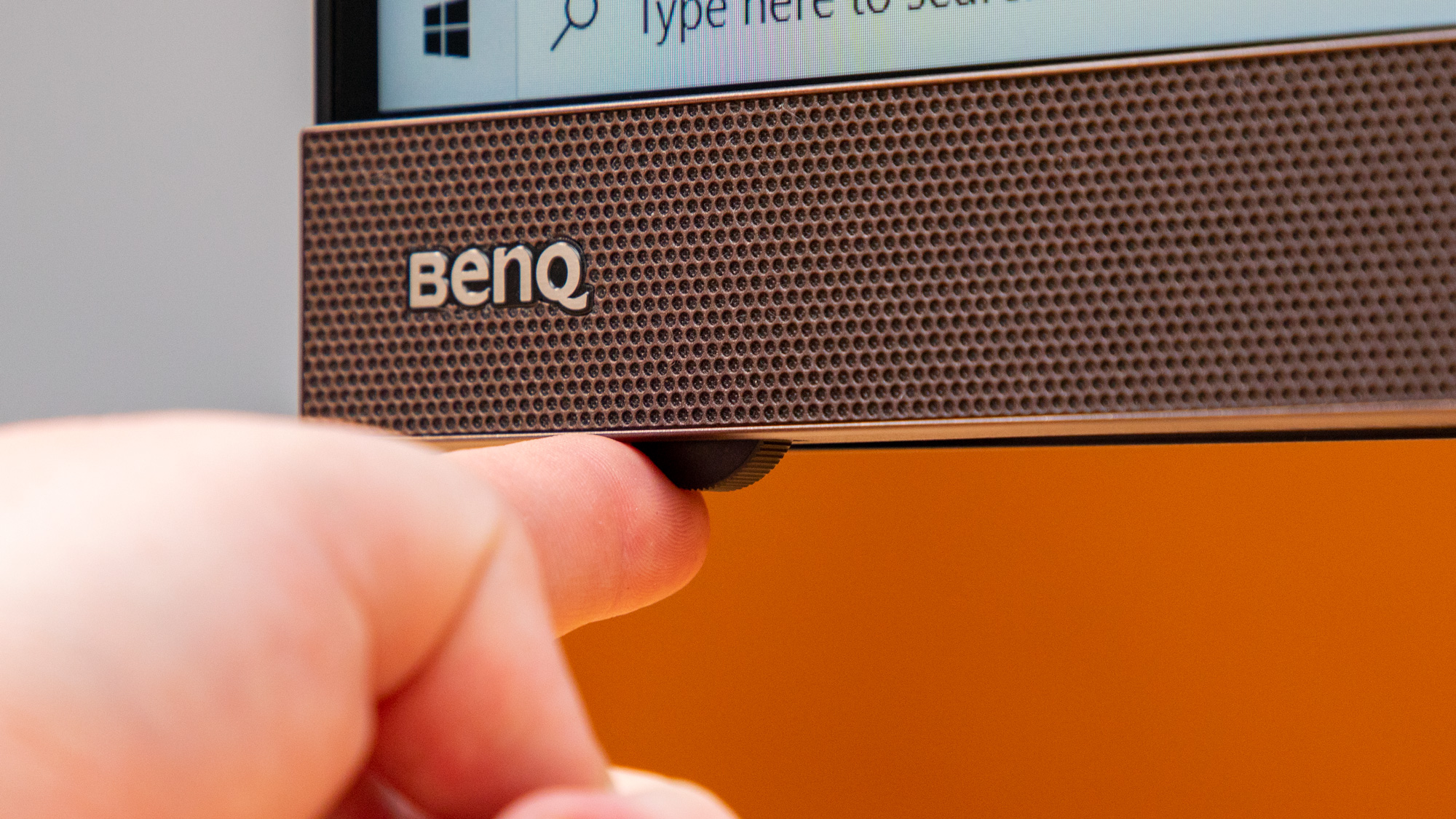
Each HDR option balances light and dark levels differently, with Game HDR offering up more detail in dark spots on the screen and Cinema HDR going for a more stark contrast with dark areas pushed ever further into darkness. The Game HDR mode has its appeal for gaming, since it offers up more visual detail than the others, but we find turning HDR off entirely to be the best all-around experience.
That’s in part because HDR is just wonky in this implementation. For one, any time we have HDR turned on outside of a game, we see abhorrent color fringing around thin black lines on bright backgrounds (i.e., most text and status icons in Windows). Our text when writing looks like we’re typing in a rainbow font. If the sharpening setting is above 5 in the monitor, we also get the effect regardless of HDR settings.
Sign up for breaking news, reviews, opinion, top tech deals, and more.
In games and videos, the HDR experience is a mixed bag. While most of the time the picture does look compelling, with colors that pop and vibrant highlights, it’s offset by the displays handling of overall brightness. As scenes and scenery change, the display suddenly turns up or down the backlight brightness, and it’s not so subtle. That’s with proper HDR enabled in Windows, on the display, and in HDR games or videos. When HDR is disabled in Windows, the emulated HDR modes of the monitor don’t suffer from those same dramatic light shifts.
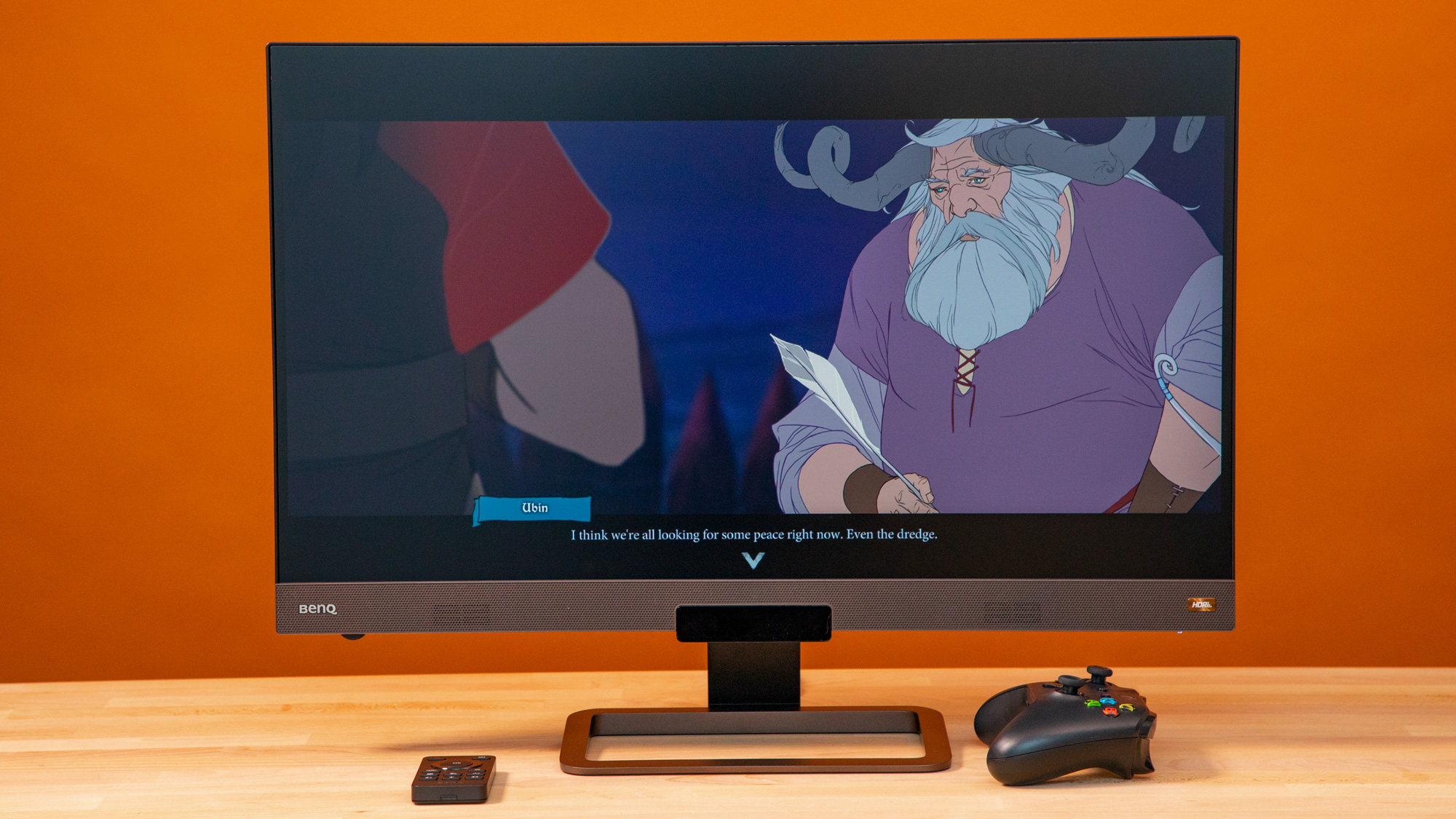
An ambient light sensor also has a part in the HDR experience, dimming the display when our surroundings are brighter, and brightening when our lights are off - something we find to be counterintuitive. It doesn’t appear to do anything about contrast either, as dark and light sections of the screen are affected together.
The monitor is capable of gaming anyway thanks to its 144Hz refresh rate, FreeSync support and sharp resolution. We find the speaker a great way to enjoy the audio for solo campaigns like Red Dead Redemption 2’s and Star Wars Jedi: Fallen Order when we want to give our ears a rest from headphones.
But it doesn’t exactly nail all the extras that should come at the price. There are many more affordable 1440p/144Hz monitors (albeit usually with TN panels) that cost substantially less while offering similar gaming performance. If the HDR worked better, it might be a stronger selling point, but for now the BenQ EX2780Q’s value hinges on its wide color gamut and speakers being something consumers want.
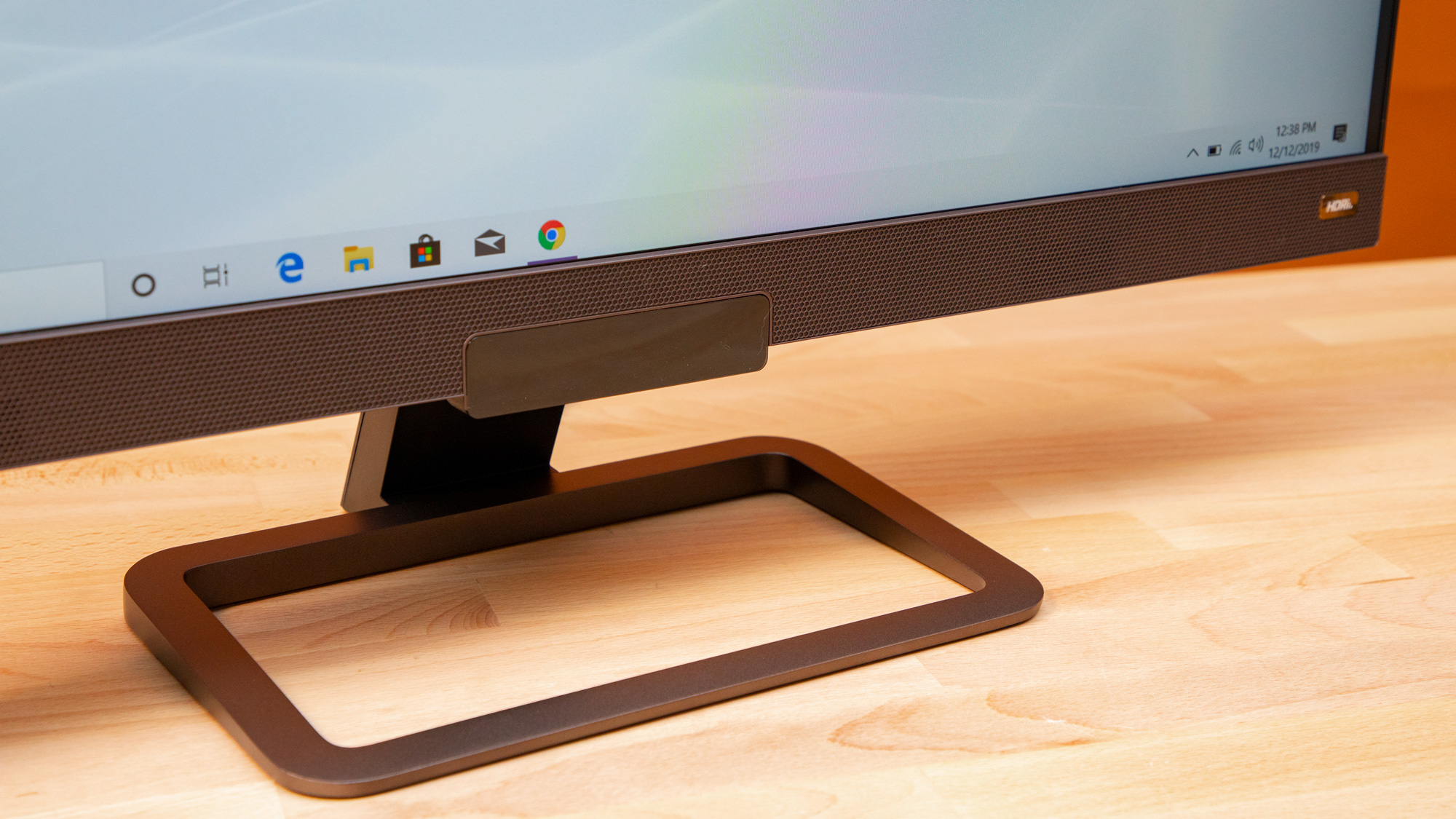
Buy it if…
You care a lot about color accuracy
The BenQ EX2780Q’s 10-bit color depth and 95% coverage of the DCI-P3 color space make it a capable device for users that want to do some image work outside of gaming.
You don’t have the desk space for dedicated speakers
The speakers on the BenQ EX2780Q are spectacular for monitor speakers. Thanks to the added bass channel, they can deliver strong, clear sound that readily fills a small room.
You want a monitor that does it all
While some gaming monitors with TN panels are only good for solo gaming, the BenQ’s combination of a color-accurate display, IPS panel, and speaker make it more versatile. It can fit the role of a gaming monitor, work display and bedroom TV. It even has all the ports to do so.
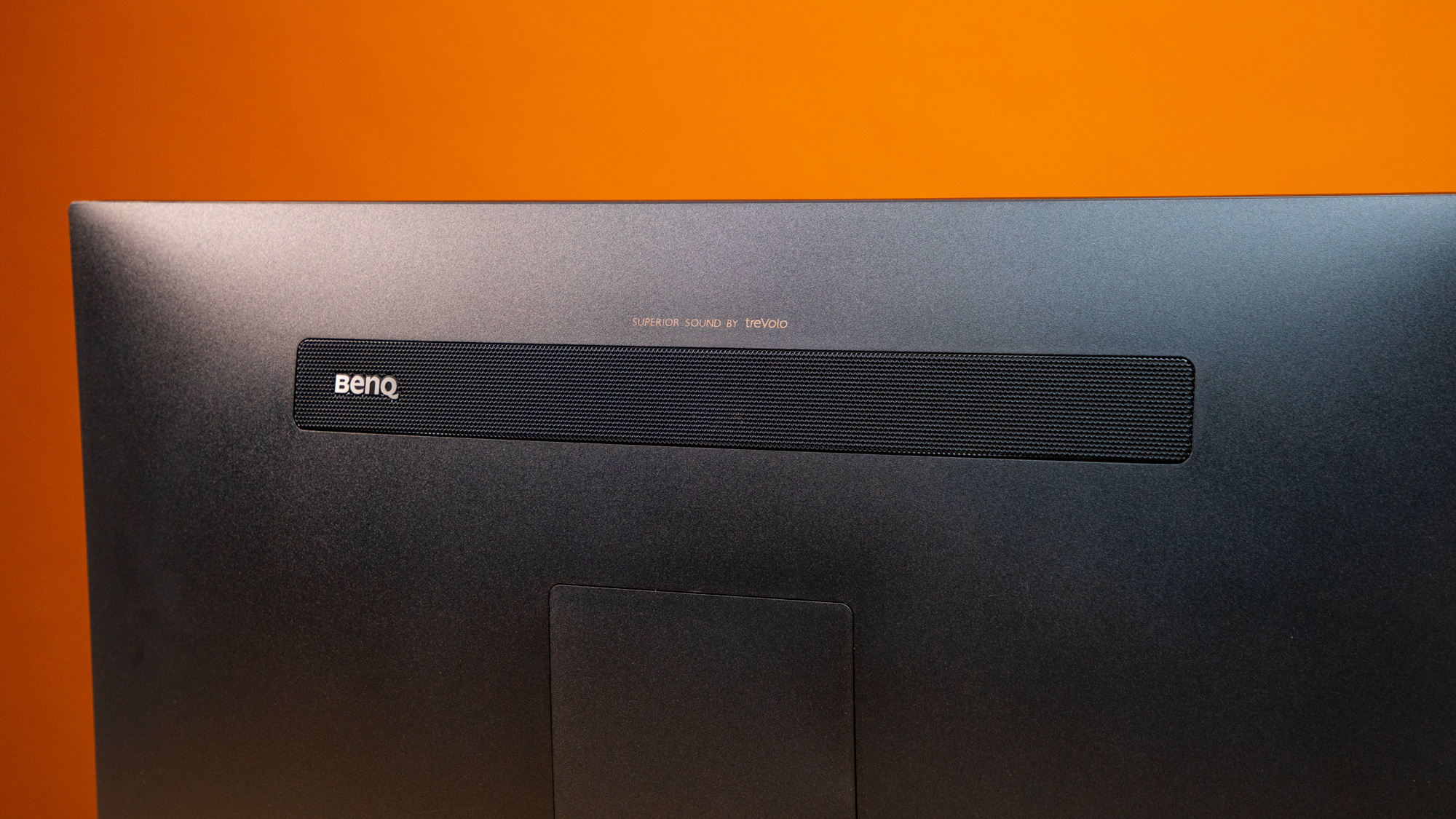
Don’t buy it if…
You’re psyched about HDR
The HDR experience from the BenQ EX2780Q was far too finicky to be a strong selling point for the monitor. If you’re really interested in HDR, you’ll likely want to consider something that meets a higher DisplayHDR standard and offers clear support for popular HDR formats like HDR10 or Dolby Vision.
You already have good speakers
The sound from this monitor is good, but it’s not as loud or punchy as a strong set of dedicated speakers will offer. If you’ve already got speakers, you can save yourself some money and buy a cheaper monitor with otherwise similar specs.
You like repositioning your monitor at different angles
The BenQ EX2780Q has a very basic stand, that only adjust to slightly different angles. That mostly works out because the IPS panel offers good viewing angles, but it doesn’t make for a flexible gaming setup. If you do need the extra flexibility, you can put it on a VESA mount.

Over the last several years, Mark has been tasked as a writer, an editor, and a manager, interacting with published content from all angles. He is intimately familiar with the editorial process from the inception of an article idea, through the iterative process, past publishing, and down the road into performance analysis.
